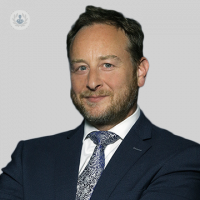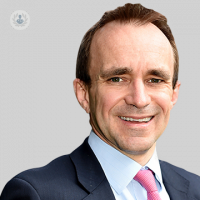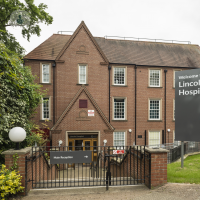What are flat feet?
The arch, or instep, of the foot is the part in the middle of the foot that is usually raised off the ground. Flat feet are when the arches of the feet are very low or non-existent, in some cases lying completely flat against the ground. They may occur due to weakness in the tendons in that area.
It is a common condition, especially in children, whose arches may develop as they grows up.
There are two types: rigid flat foot, which has no arch under any circumstances, and flexible flat foot (the most common type), in which the foot flattens when pressed on the ground, but when raising it, the arch reappears.
What are the symptoms of flat feet?
Before two years of age, flat feet are impossible to detect, because until then, the feet have a layer of fat and soft tissue on the sole. The insteps form in most children between the ages of three and five. After this age, the key symptom of flat feet is the flat appearance of the foot, without an arch.
Generally, flat feet do not cause pain when walking or making any movement, but some patients may experience pain in the feet, ankles, or even higher up in the legs, hips and lower back. This pain may get worse when moving around, and swelling can occur around the ankles.
What causes flat feet?
There are several possible causes of flat feet. In babies and toddlers, flat feet are normal, as the arch hasn’t formed yet. Even older children may have flexible flat feet, where the arch only appears when the child is not putting pressure on the sole of the foot, e.g. when sitting.
As this is due to the fact that the arch is still developing, most children with flexible flat feet will grow out of them. In other cases, flat feet may be caused by the following:
- Genetics – if your parents had flat feet you are more likely to also have them.
- Congenital conditions – if the foot bones didn’t form properly in the womb, flat feet may be the result.
- Conditions such as Ehlers-Danlos or Marfan syndrome.
- Conditions that affect the muscles or nerves, such as spina bifida or muscular dystrophy.
- Overuse, injury, ageing, and general wear-and-tear can cause the arch to collapse in adults, leading to flat feet. Contributing factors could include unsupportive footwear, obesity, or rheumatoid arthritis.

Can flat feet be prevented?
Most of the causes of flat feet are impossible to prevent.
However, you can minimise your chances of developing flat feet in adulthood by taking care of your feet. Some steps you can take include:
- Make sure your shoes are the correct size, and fit well, supporting the foot.
- Try not to over-exert your muscles when doing sport or exercise.
- If you notice that the arch in one or both of your feet is disappearing, visit your doctor, who may recommend exercises or therapy.
What is the most effective treatment?
Most cases of flat feet do not cause the patient any problems, in which case, no treatment is necessary. In cases where flat feet cause pain, the following treatments may be advised by the patient’s doctor:
- The use of insoles, supportive shoes or arch supports when walking.
- If the patient is overweight or obese, losing weight is strongly recommended.
- Painkillers and anti-inflammatories can help manage the discomfort and any inflammation
- Physiotherapy and stretching exercises can help to strengthen the connective tissue, particularly in cases of overuse and injury.
If more conservative treatments fail, or if there is an underlying condition, there are surgical options. If bones are abnormally shaped or joined together, surgery may involve straightening and separating them. If the problem is in the connective tissue, surgery may involve lengthening or repairing this tissue.
11-13-2012 06-15-2023Flat feet
Mr Thomas Crompton - Paediatric orthopaedics
Created on: 11-13-2012
Updated on: 06-15-2023
Edited by: Carlota Pano
What are flat feet?
The arch, or instep, of the foot is the part in the middle of the foot that is usually raised off the ground. Flat feet are when the arches of the feet are very low or non-existent, in some cases lying completely flat against the ground. They may occur due to weakness in the tendons in that area.
It is a common condition, especially in children, whose arches may develop as they grows up.
There are two types: rigid flat foot, which has no arch under any circumstances, and flexible flat foot (the most common type), in which the foot flattens when pressed on the ground, but when raising it, the arch reappears.
What are the symptoms of flat feet?
Before two years of age, flat feet are impossible to detect, because until then, the feet have a layer of fat and soft tissue on the sole. The insteps form in most children between the ages of three and five. After this age, the key symptom of flat feet is the flat appearance of the foot, without an arch.
Generally, flat feet do not cause pain when walking or making any movement, but some patients may experience pain in the feet, ankles, or even higher up in the legs, hips and lower back. This pain may get worse when moving around, and swelling can occur around the ankles.
What causes flat feet?
There are several possible causes of flat feet. In babies and toddlers, flat feet are normal, as the arch hasn’t formed yet. Even older children may have flexible flat feet, where the arch only appears when the child is not putting pressure on the sole of the foot, e.g. when sitting.
As this is due to the fact that the arch is still developing, most children with flexible flat feet will grow out of them. In other cases, flat feet may be caused by the following:
- Genetics – if your parents had flat feet you are more likely to also have them.
- Congenital conditions – if the foot bones didn’t form properly in the womb, flat feet may be the result.
- Conditions such as Ehlers-Danlos or Marfan syndrome.
- Conditions that affect the muscles or nerves, such as spina bifida or muscular dystrophy.
- Overuse, injury, ageing, and general wear-and-tear can cause the arch to collapse in adults, leading to flat feet. Contributing factors could include unsupportive footwear, obesity, or rheumatoid arthritis.

Can flat feet be prevented?
Most of the causes of flat feet are impossible to prevent.
However, you can minimise your chances of developing flat feet in adulthood by taking care of your feet. Some steps you can take include:
- Make sure your shoes are the correct size, and fit well, supporting the foot.
- Try not to over-exert your muscles when doing sport or exercise.
- If you notice that the arch in one or both of your feet is disappearing, visit your doctor, who may recommend exercises or therapy.
What is the most effective treatment?
Most cases of flat feet do not cause the patient any problems, in which case, no treatment is necessary. In cases where flat feet cause pain, the following treatments may be advised by the patient’s doctor:
- The use of insoles, supportive shoes or arch supports when walking.
- If the patient is overweight or obese, losing weight is strongly recommended.
- Painkillers and anti-inflammatories can help manage the discomfort and any inflammation
- Physiotherapy and stretching exercises can help to strengthen the connective tissue, particularly in cases of overuse and injury.
If more conservative treatments fail, or if there is an underlying condition, there are surgical options. If bones are abnormally shaped or joined together, surgery may involve straightening and separating them. If the problem is in the connective tissue, surgery may involve lengthening or repairing this tissue.
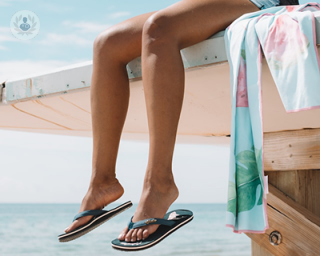

Flat feet: When is treatment required?
By Mr Paul Hamilton
2025-01-28
Surprisingly, symptoms such as hip or knee pain can be the result of flat feet. We asked revered consultant foot and ankle orthopaedic surgeon Mr Paul Hamilton to shed light on the symptoms of flat feet and share his expert insight on what types of treatment are available for this condition. See more
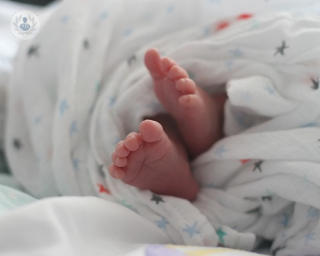

Flat feet in children: Is correction always necessary?
By Mr Nigel Kiely
2025-01-28
The condition of flat feet in children is very common but some may need special support if they experience pain or discomfort. In this article, highly esteemed consultant orthopaedic surgeon Mr Nigel Kiely, who specialises in paediatric orthopaedics, explains when flat feet in children needs treatment and what options are available. See more
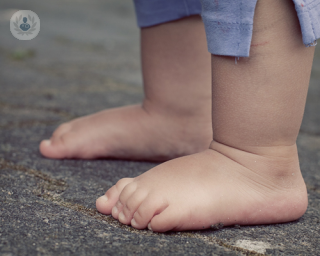

Falling flat? Misconceptions about flat feet
By Mr Thomas Crompton
2025-01-28
Some people's perception of having flat feet may not involve being a sporting legend, but did you know both Cristiano Ronaldo and Usain Bolt have them? Consultant orthopaedic surgeon and paediatric specialist, Mr Thomas Crompton, provides reassurance for parents who may be concerned about problems leading from flat feet and discusses how, on the whole, children having them is completely normal - and how they could be the feet of future champions. See more


Know more about adult flatfoot reconstruction surgery
By Mr David Redfern
2025-01-28
Adult acquired flatfoot deformity is a condition in which the arch of the foot can become flatter and cause pain. Orthopaedic specialists, such as Mr David Redfern often try to correct these conditions non-operatively, however surgery is frequently required due to continuing symptoms. Mr Redfern explains how adult acquired flatfoot is corrected surgically. See more
Experts in Flat feet
-
Mr Andrew Goldberg
Orthopaedic surgeryExpert in:
- Ankle replacement surgery
- Foot and ankle
- Ankle instability
- Achilles tendon
- Flat feet
- Paediatric orthopaedics
-
Mr Stephen Bendall
Orthopaedic surgeryExpert in:
- Foot and ankle
- Ankle arthroscopy
- Arthritis
- Minimally invasive bunion surgery
- Sports injuries
- Flat feet
-
Mr Billy Jowett
Orthopaedic surgeryExpert in:
- Bunion (hallux valgus)
- Arthritis
- Ankle
- Flat feet
- Achilles tendon
- Ankle arthroscopy
-
Mr Tarek El Gamal
Orthopaedic surgeryExpert in:
- Foot and ankle
- Ankle arthroscopy
- Achilles tendon
- Flat feet
- Bunion (hallux valgus)
- Plantar fasciitis
-
Mr Thomas Crompton
Paediatric orthopaedicsExpert in:
- Cerebral palsy
- Neuromuscular disease
- Limb lengthening
- Pediatric hip
- Flat feet
- Hip dysplasia
- See all

OSOM Care
OSOM Care
Manor Lodge, Mill Lane
No existe teléfono en el centro.
By using the telephone number provided by TOP DOCTORS, you automatically agree to let us use your phone number for statistical and commercial purposes. For further information, read our Privacy Policy
Top Doctors

Lincoln Private Hospital - part of Circle Health Group
Lincoln Private Hospital - part of Circle Health Group
Nettleham Road, Lincoln, Lincolnshire, LN2 1QU
No existe teléfono en el centro.
By using the telephone number provided by TOP DOCTORS, you automatically agree to let us use your phone number for statistical and commercial purposes. For further information, read our Privacy Policy
Top Doctors

Thornbury Hospital - part of Circle Health Group
Thornbury Hospital - part of Circle Health Group
312 Fulwood Road, Sheffield S10 3BR
No existe teléfono en el centro.
By using the telephone number provided by TOP DOCTORS, you automatically agree to let us use your phone number for statistical and commercial purposes. For further information, read our Privacy Policy
Top Doctors
-
OSOM Care
Manor Lodge, Mill Lane, CheadleExpert in:
- Arthritis
- Hip
- Pain management
- Shoulder and elbow
- Hand and wrist
- Sports Medicine
-
Lincoln Private Hospital - part of Circle Health Group
Nettleham Road, Lincoln, Lincolnshire, LN2 1QU , LincolnExpert in:
- Abdominal ultrasound
- Abdominoplasty
- Radiofrequency ablation (RFA)
- Acne
- Vascular Surgery
- Thread veins
-
Thornbury Hospital - part of Circle Health Group
312 Fulwood Road, Sheffield S10 3BR, SheffieldExpert in:
- Cardiology
- Colorectal surgery
- Endocrinology, Nutrition and Thyroid
- endoscopy
- Fertility
- Otolaryngology
- See all
- Most viewed diseases, medical tests, and treatments
- Osteoporosis
- Ulnar nerve entrapment
- Peripheral nerve block
- Peripheral neuropathy
- Undescended testicle (Cryptorchidism)
- Joint pain
- Lumbar herniated disc
- Abdominal pain
- Spinal surgery
- Minimal access surgery (keyhole surgery)

